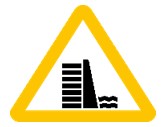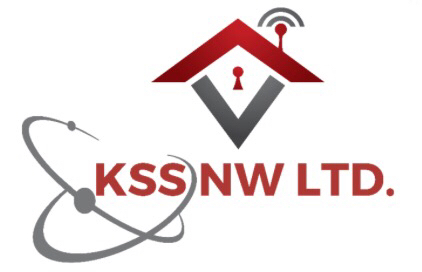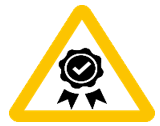Title Page
-
Site conducted
-
Conducted on
-
Prepared by
-
Additional Persons:
-
Location
Risk Category Standard - Environment
Responsibilities
-
Who is the Risk Owner of this risk category?
-
Who is the Control Owner of the risk category?
-
Who is the Risk Executer of this risk category?
-
Who is the Task Executers of this risk category?
Competencies
-
Is the Risk Owner trained and competent to manage this risk category?
-
Is the Risk Control Owner trained and competent to manage this risk category?
-
Are the Risk Exacters trained and competent to manage this risk category?
-
Are the Task Executers trained and competent to manage this risk category?
Appointments
-
Is the Risk Owner appointed to conduct his/her duties? (WAH Planner, risk assessor.....)
-
Is the Risk Control Owner appointed to conduct his/her duties? (WAH Planner, risk assessor.....)
Risk Management Requirements
-
Conduct risk assessments for environmental aspects (e.g. airborne, water, chemicals, soil, waste pollutants) by subject matter experts.
-
Adhere to legislation to ensure that all environmental aspects or impacts are properly managed and that all operations are compliant.
-
Optimise the design of facilities to prevent or reduce environmental impacts. Philosophies such as Zero Waste,<br>Zero Discharge, Energy Reduction as captured in the Sustainability Strategy to be incorporated into design and operation.
-
Ensure that extreme weather and climate change is considered in plant design and maintenance.
-
Monitor all environmental aspects and all controls at a frequency prescribed by in-country legislation (e.g. gas and leak detection systems).
-
Implement and update operational standards, procedures, processes, control documents and technical data to ensure clear guidance is given (e.g. ISO standards).
-
Adhere to the management of change (MOC) process for all changes.
-
Ensure that workers are trained, authorised, licensed and competent where applicable.
-
Ensure contractor management is followed where applicable.
-
Ensure emergency preparedness and response systems are in place to mitigate incidents and environmental impacts.
-
Use the Group and Country-Specific requirements for environmental reporting as best practices.
-
Refer to the Process safety and Product transportation risk category standards if the work includes anything relevant.
Minimum Critical Controls
Air Emissions
-
Adhere to minimum emission standards (MES) and Atmospheric emission licence limits as set by the competent authority.
-
Ensure that emission monitoring is undertaken as per legislated timeframes to monitor the impact
-
Ensure that continuous monitoring equipment is in good functioning status.
-
Align to 2025 Sustainability targets by reducing tonne CO₂ equivalent emissions where applicable in your value chain i.e. N₂O secondary catalyst.
-
Abatement systems (e.g. scrubbing systems, Electrostatic Precipitator, bag house) must be implemented where applicable.
-
Gas detection systems must be in place to do early detection of emissions outside parameters where applicable.
-
Ensure on-line monitoring systems are in place and periodic sampling is undertaken as per license requirements.
-
Conduct emergency response as per risk assessment (e.g. flares).
Water and Effluent
-
Eliminate, Reduce or Repurpose effluent where possible by innovating design process to not generate effluent, installing<br>effluent recovery, treatment and re-use processes (Zero Liquid Effluent Discharge) or recover and reuse effluent in the existing<br>process as recycled material.
-
Adhere to relevant water quality parameters (e.g. pH) which are set by the competent authority.
-
Ensure the relevant water and effluent key performance indicators (KPIs) are tracked as per in-country requirements.
-
Use alternative substitute to potable water for sustainable water supply where applicable (e.g. grey water, treated effluent).
-
Report high potential near misses, all incidents and non-compliances to any authorisation deemed to impact the integrity of the downstream water resources.
-
Drainage systems must be in place to ensure that storm water and effluent are separated.
-
Effluent treatment systems must be implemented to re-use water within the process and ensure compliance with permit levels.
-
Conduct emergency response as per risk assessment.
Land Impact and Pollution
-
Refer to environment risk management requirements above
Product life-cycle process (manufacturing to disposal) must be in place for all waste streams (waste generation to landfill - cradle to grave) according to area-specific waste legislation:
-
Waste avoidance or elimination must be the primary action by innovative MOC
-
Waste must be reduced, reused, recycled or treated before it is disposed by establishing waste recycling stations or repurpose waste
-
Separation and classification into categories aligned with legislation — hazardous and general waste
-
Ensure waste disposal sites are licensed and registered to receive waste streams.
-
Automatic process control (e.g level control or pressure control valves) must be in place and effective.
-
Emergency shutoff systems must be in place and effective.
-
Spill containment systems (primary and secondary bunding) must be implemented where applicable.
-
Conduct emergency response as per risk assessment.
Abatement Systems
-
Identify and Implement abatement equipment for beyond compliance where<br>practical (NEMAQA S21 Abatement Methods)
-
Conduct maintenance of abatement equipment as per licence or permit and design specification.
-
Conduct measurements, sampling, compliance tracking of emissions to ensure requirements of legislation are met.
-
Ensure that the abatement system operates at optimal efficiencies as per the plant operating instruction or standard operating procedures.
-
Critical spares for abatement systems must always be available.
-
Assess the need and/or applicability for continuous monitoring and implement where possible.
-
Assess the feasibility of green alternatives e.g. sulphuric acid manufacturing via sulphur dioxide (SO₂ ) or greener fuels such as natural gas vs heavy fuel oil (HFO) and implement these alternatives where possible.
Gas Detection Systems
-
Ensure that all detection systems and alarms are in working order.
-
Ensure gas detection systems are maintained and tested regularly.
-
Calibrate gas detection systems regularly as per design requirements
-
Critical spares for gas detection systems must always be available.
-
Position gas detection sensors correctly and optimally as required within the plant and on the boundaries of the plant, as well as handheld or individual gas sensors.
-
Ensure the correct monitors are used for the correct type of gas.
Drainage Systems
-
Ensure that clean and dirty water is separated (e.g. separate drainage systems, catchment systems).
-
Ensure that periodic checks and maintenance are scheduled and performed on mechanical equipment and instrumentation.
-
Automatic shutoff valves must be in place to prevent out of specification storm water from leaving the site.
-
Alarms or detectors must be in good working order.
-
Critical spares for the drainage systems must always be available.
-
Testing of storm water and effluent must be conducted to ensure that all specifications are compliant prior to discharge (online monitoring usually only checks pH, conductivity, E.coli and sulphites).
-
Containment systems such as bunding must be in place for all chemicals, raw material, products, tanks and flow bins.
-
Implement first flush system where applicable.
-
Ensure that the storm water infrastructure can withstand and cater for severe flooding or flash floods and periodic flooding such as 1 in 50 years.
Effluent Treatment System
-
Eliminate freshwater contamination and be water-wise. Separate dirty and clean water (Storm water and water containing waste) in the operation.
Test the effluent discharges from the effluent system against the applicable:
-
discharge standard (if the effluent is discharged to a surface water or sewer), and
-
water quality standard for a specific reuse (e.g. if the effluent is reused for irrigation).
-
It is essential to maintain the nominal flow rate in the effluent system when draining the retention basins.
-
Valves must remain closed, and release must be controlled.
-
Sensors and alarms for pit overflows, drop in pressure, increase in pit levels must be in place where applicable.
Spill Containment Systems
-
Bund must be big enough to contain at least 110% of the volume of the largest tank. Wall-type bunds at tank storage facilities must be correct height to contain spills from tanks close to the bund.
-
The bund floor and walls must be built of materials impervious to the contents of any tank or container within the bund.
-
Analyse water quality before draining bunds.
-
Valves must remain closed, and release must be controlled.
-
If the bund walls are more than 1m above the floor, provide steps or ladders for quick escape.
-
All bunds must be routinely inspected to ensure maintenance of their structural integrity. A routine inspection and maintenance program must be tailored to suit the specific installation.












